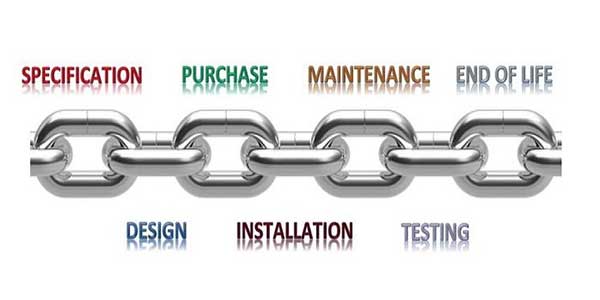
The length of how long a battery system will reliably remain in service is determined by all the links below. Each step in the life cycle of a battery system plays a significant role and can add or subtract actual years of service life.
SPECIFICATION
Does a standard or specification that was written one, two or more systems ago still control what products are considered and purchased. Advances in battery technology, design, metallurgic alloys and manufacturing methods have rapidly advanced in the last 20 years. “Buying what we have always purchased in the past” is no longer the only option available when looking for truly reliable systems with long service life.
DESIGN
Choice of the correct product for the application will affect the life span of the system. A low cycle life product used in an application where hundreds of cycles will be expected over its life span will leave equipment and personnel in the dark sooner than expected, usually without warning.
PURCHASE
Plain and simple, what you buy is what you get. If fiscal cost and responsibility is the first consideration in your decision, you will most likely not get what you expected you were buying. Compare the recovery cost of a single failure or early non budgeted replacement of the system at any point in its life with the difference in the cost between bids from vendors.
INSTALLATION
Proper installation, initial charging and float development is key to longevity of the system. Environmental control and conditions are a large factor in life expectancy. Early problems which go undetected or uncorrected have a cumulative negative affect on system performance stealing months or years off system service life expectancy.
MAINTENANCE
Close attention to maintenance data can help identify problems and trends and allow for adjustments. Missed indications of out of normal results can allow a system to develop more severe problems which require corrective action or replacement.
TESTING
Properly conducting maintenance and capacity tests following the industry standard guidelines proves the reliability of the system. Incorrectly performed tests with bad results, improper calculations or test parameters can prematurely condemn systems which still have reliable capacity.
END OF LIFE
Capacity testing is the only true way to determine when it is time to replace the whole system. Unquestionable reliability is the goal with all emergency backup systems, but how you manage each of the links in your battery life cycle chain will determine when that reliability comes into question.

